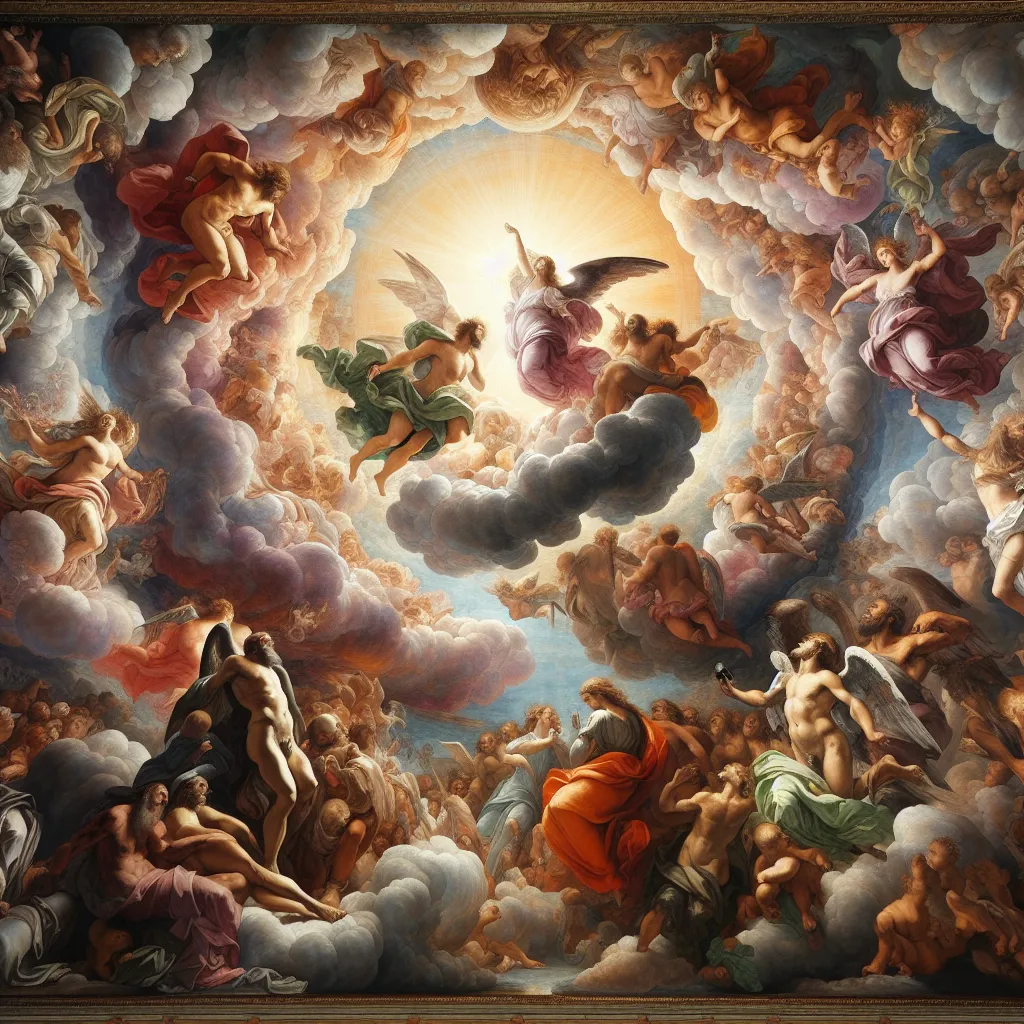
- Published on
- Authors

- Name
- You
The Apocalypse of John: Revelations and Mystical Visions
The Book of Revelation, also called the Apocalypse of John, stands as one of the most enigmatic and profoundly symbolic texts within esoteric literature. This article examines the apocalyptic visions encapsulated within its verses, interpreting them through a unique lens that marries advanced scientific paradigms with mystical wisdom.
A Brief History of the Apocalypse of John
The Book of Revelation is believed to have been written around 95-96 CE during the reign of Emperor Domitian. Allegedly authored by John the Apostle, the text was composed while he was exiled on the island of Patmos. Revelation is composed of prophetic visions, vivid symbols, and poetic language designed to convey complex spiritual truths.
Major Themes
- Eschatology: Conceptual frameworks about the end times.
- Christology: Depictions and roles of Jesus Christ in eschatological events.
- Symbolism: Use of signs and visions to convey deeper meanings.
Science and Mysticism: An Interdisciplinary Approach
To fully appreciate Revelation, one must consider it a confluence of both advanced science and mystical insight. Here, we will employ modern scientific principles to decode its mystical language.
The Symbolism of Numbers
In Revelation, numbers hold significant weight. They are not mere quantifiers but symbolic markers.
| Number | Symbolic Meaning |
|---|---|
| 7 | Completeness, Spiritual Perfection |
| 12 | Divine Authority and Structure (12 Tribes, 12 Apostles) |
| 144,000 | The Elect, representing the chosen ones in spiritual terms |
Apocalyptic Vision: The Four Horsemen
Revelation introduces the Four Horsemen as harbingers of the apocalypse - symbols that resonate deeply within the mystical and scientific communities.
| Horseman | Color of Horse | Symbolism | Scientific Interpretation |
|---|---|---|---|
| Conquest | White | Victory and Purity | Evolutionary psychology related to dominance and survival tactics. |
| War | Red | Bloodshed and Conflict | Sociological implications of human conflict and war cycles. |
| Famine | Black | Scarcity and Starvation | Environmental science focusing on resource depletion and food security. |
| Death | Pale | Mortality and Endings | Medical science and epidemiology focusing on disease, death, and decay. |
Mystical Interpretations
The Vision of the Dragon
One of the more striking visions in Revelation is that of the dragon, symbolically linked to chaos and destruction.
| Symbol | Description | Mystical Interpretation |
|---|---|---|
| Dragon | Seven heads, ten horns, and seven crowns | Represents primal chaos and cosmic struggle. |
The New Jerusalem
Revelation concludes with the vision of the New Jerusalem. It is a shining city descending from heaven, symbolizing the ultimate union of the divine and the material world.
| Symbol | Description | Mystical Interpretation |
|---|---|---|
| New Jerusalem | A city with twelve gates and foundations | Alchemical merging of opposites and realization of spiritual goals. |
Conclusion
The Book of Revelation remains a fertile ground for both mystical interpretation and scientific inquiry. It orchestrates a divine symphony where the mystical symbols can be decoded through the lenses of science, revealing a tapestry rich in esoteric and empirical knowledge. Whether approached as a sacred prophecy or a sophisticated allegory, Revelation offers profound insights into the human condition and the mysteries of existence.
In the intersection of advanced science and mystical wisdom lies a greater understanding of the Apocalypse of John—a timeless narrative that transcends religious boundaries and illuminates the path ahead for all seekers of truth.
By blending mystical and scientific lenses, we gain a deeper, more enriched understanding of this ancient text, uncovering the layers of wisdom it holds for the modern world.
